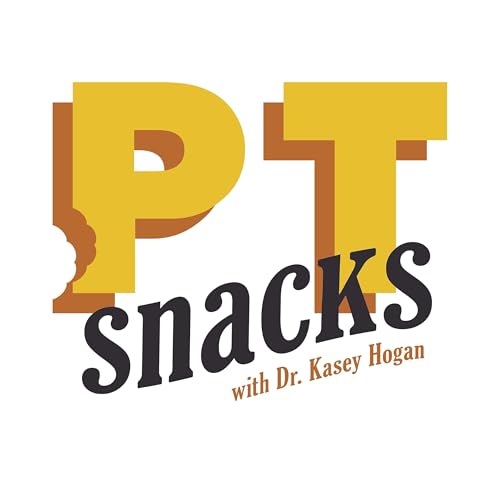Send us a text
Welcome to PT Stocks podcast! In this episode, we dive into the fundamentals of using MRIs in physical therapy. MRIs are a great tool, but we need to learn how to use them appropriately to maximize their effectiveness. We'll explore key topics such as common asymptomatic MRI findings, when to order imaging, and how to educate and empower patients. Expect to learn about the cervical and lumbar spine, knee, rotator cuff, and hip labral tears, and get actionable tips on integrating MRI with clinical assessments. Tune in for practical takeaways that will enhance your diagnostic skills without over-relying on imaging.
00:00 Introduction to PT Stocks Podcast
00:55 Understanding MRIs: Asymptomatic Findings
03:42 Clinical Examples of MRI Findings
08:59 When to Order an MRI
12:34 Cases Where MRI May Not Be Needed
14:50 Conclusion and Additional Resources
Brinjikji W, Luetmer PH, Comstock B, et al. Systematic literature review of imaging features of spinal degeneration in asymptomatic populations. AJNR Am J Neuroradiol. 2015;36(4):811–816. doi:10.3174/ajnr.A4173
Culvenor AG, Øiestad BE, Østerås N, et al. MRI features of knee osteoarthritis in patellofemoral pain: a cross-sectional case–control study. Br J Sports Med. 2018;52(12):817–823. doi:10.1136/bjsports-2017-098349
Tempelhof S, Rupp S, Seil R. Age-related prevalence of rotator cuff tears in asymptomatic shoulders. J Shoulder Elbow Surg. 1999;8(4):296–299. doi:10.1016/S1058-2746(99)90148-9
Yamaguchi K, Ditsios K, Middleton WD, Hildebolt CF, Galatz LM, Teefey SA. The demographic and morphological features of rotator cuff disease: a comparison of asymptomatic and symptomatic shoulders. J Bone Joint Surg Am. 2006;88(8):1699–1704. doi:10.2106/JBJS.E.00835
Register B, Pennock AT, Ho CP, Strickland CD, Lawand A, Philippon MJ. Prevalence of abnormal hip findings in asymptomatic participants: a prospective, blinded study. Am J Sports Med. 2012;40(12):2720–2724. doi:10.1177/0363546512453291
Cardinal E, Buckwalter KA, Braunstein EM, Pope TL, Montgomery WJ. MR imaging of the Achilles tendon: a pictorial essay. Radiographics. 1996;16(2):417–428. doi:10.1148/radiographics.16.2.8966297
Deyo RA, Mirza SK, Turner JA, Martin BI. Overtreating chronic
Go to PT Final Exam using this link to access great studying options to conquer the NPTE!
Support the show
Stay Connected!
Follow so you never miss an episode. Send your questions via email to ptsnackspodcast@gmail.com
Join the email list HERE
Need CEUs or NPTE Prep?
Save over $100 on unlimited CEUs with MedBridge using code PTSNACKSPODCAST at checkout.
Students: Get a full year of access for less with code PTSNACKSPODCASTSTUDENT.
Prepping for the NPTE? PT Final Exam offers all the tools you need. Use code PTSnacks at checkout to get a discount!
Support the Show:
Share the episode with someone who'd benefit.
Contributing directly to the "support" link.
Thanks for tuning in—your support makes this all possible!
 Nov 18 202515 min
Nov 18 202515 min 14 min
14 min Nov 4 202510 min
Nov 4 202510 min 15 min
15 min 19 min
19 min 14 min
14 min 14 min
14 min 16 min
16 min
